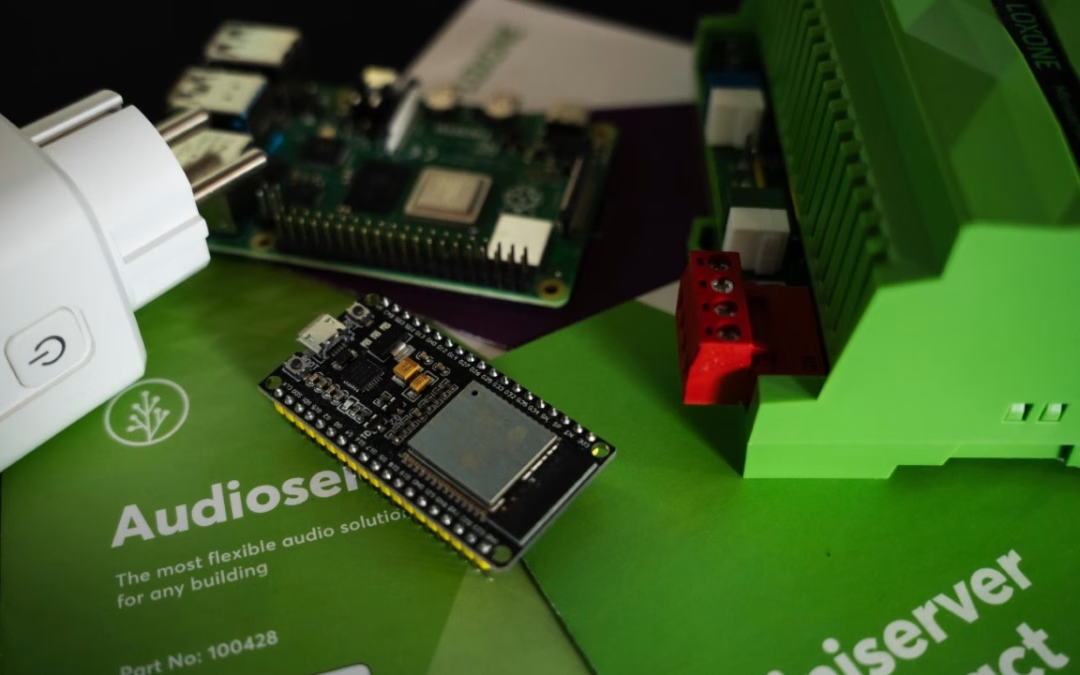Look, I have automation at home. I can turn on the lights or open the garage door from my phone.
This is what a friend told me as he excitedly showed me two apps on his phone — one for a light bulb, the other for the garage door. For many people, this is their first encounter with the possibilities of home automation. And it would be a shame if it were the last. That’s why he inspired me to write this article titled “Not all automation is created equal.”
Nowadays, technology is an integral part of our lives. With the rise of smart homes, we can easily control appliances remotely — from a mobile phone or through automation systems. But what are the differences between the various levels of automation? Let’s take a look at three basic options: controlling appliances via mobile phone, simple automation based on “if this, then that” logic, and advanced automation using sophisticated systems like Loxone.
1. Controlling appliances via mobile phone
This method is probably the simplest gateway into the world of smart homes. Using an app, you can control various appliances and devices — from lighting and heating to your coffee machine. Examples include smart bulbs or sockets connected to a mobile app, allowing you to turn devices on or off, or set a timer, all from the comfort of your couch or even your office.
Advantages:
- Easy installation and control.
- Affordable products.
- Suitable for smaller projects or individual appliances.
Disadvantages:
- Limited automation capabilities.
- Requires manual action (opening the app and triggering the command).
- Each product may have its own app, which means you have to switch between them.
2. Simple automation: If this happens, then do that
Simple automation works on the principle of “if something happens, then do this.” For example, you can set the lights to turn on automatically at sunset or have the heating activate when the room temperature drops below a certain level.
This type of automation is ideal for basic tasks that we want to automate without manual intervention. It uses predefined rules and conditions that automatically trigger actions.
Advantages:
- Easy setup and control.
- Automation of routine tasks (e.g. lighting, heating).
- Saving energy and increasing comfort.
Disadvantages:
- Limited customization options and complex scenarios.
- Often depends on individual appliances, which may have limited functionality.
- Does not include more complex logic or multiple variables (e.g. a combination of temperature, time, and presence of people).
3. Smart automation: Loxone
Smart automation, offered for example by the Loxone system, represents the pinnacle of automation for both residential and commercial spaces. This system not only allows you to control appliances via mobile phone and automate basic tasks, but more importantly, it is equipped with advanced logic and customization options that enable comprehensive management of the entire home.
Loxone can integrate and control various systems in the home (lighting, heating, shading, security) based on multiple variables. For example, it can automatically dim the lights when you're watching TV or use surplus energy from photovoltaics to heat water in the boiler.
Advantages:
- Full integration of all systems and appliances into a single unit.
- Advanced automation options that adapt to your needs and habits.
- The system learns from your habits and ensures optimal comfort and energy efficiency.
- Control both manually and automatically, with remote management capabilities.
Disadvantages:
- Higher initial investment.
- Requires professional installation and configuration.
Each level of automation has its own advantages and disadvantages. While controlling appliances via mobile phone is a great starting point, simple automation already offers a certain level of comfort and automatic control. For those who want a fully automated smart home that adapts to their needs and saves energy, smart automation with Loxone is the ideal choice. This system can manage not only individual appliances but also entire energy flows, turning your home into a truly intelligent building.
The choice depends on your priorities — whether you prefer simplicity or a comprehensive solution for the whole house. Whatever path you choose, smart technologies will bring you more comfort, safety, and savings in everyday life.
If you’d like to explore the possibilities that automation offers, feel free to reach out. We’ll be happy to help you design and implement a solution tailored to your needs.
